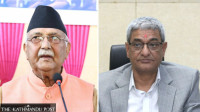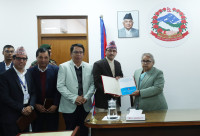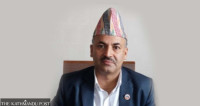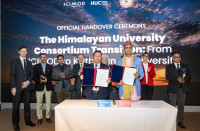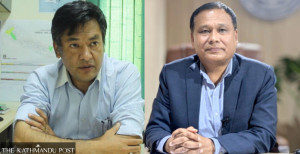National
As virus grips nation, cooperation lacking between three tiers of government
Local government representatives say the centre has empowered chief district officers and they are toothless.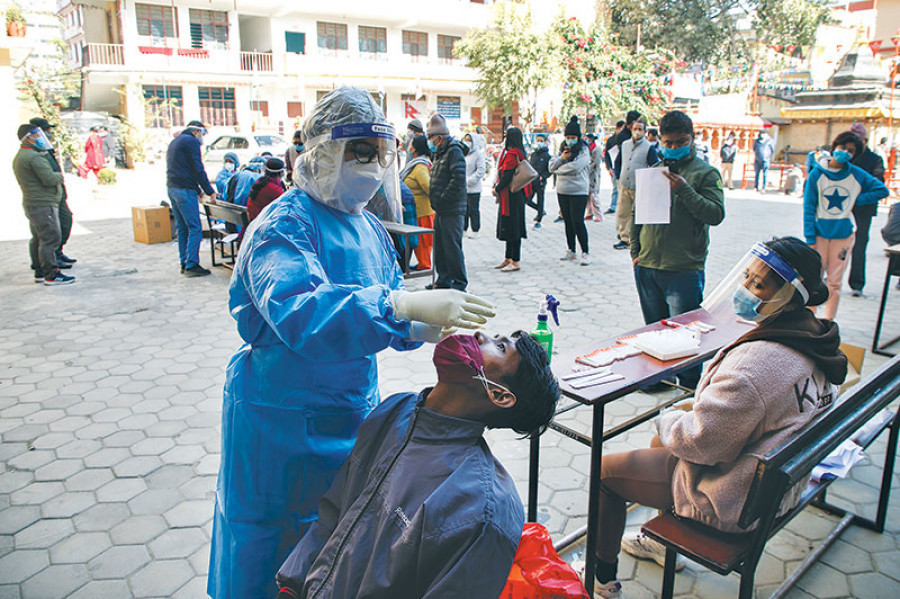
Anup Ojha
As Covid-19 cases in the country are getting worse by the day, hospitals across the country are reeling under shortages of beds, oxygen and other medical equipment.
Restrictions imposed by the authorities in various districts, meanwhile, have added to the woes of poor ordinary citizens who need to work in order to survive.
Amid all this, the government seems incapable of coming up with constructive ways to deal with the crisis. The lack of coordination between the federal, provincial and local governments has been laid bare as the country suffers in the throes of a second wave of the pandemic.
The federal and subnational governments are doing next to nothing to stem the spread of the virus.
The government has let down its citizens, says Rajendra Maharjan, a political commentator.
“We are in the present situation because of the KP Sharma Oli government,” Maharjan added. “Instead of cooperating with provincial and local governments during the time of a major health crisis, the government is still trying to sell the illusion of development and prosperity to the people.”
The country on Saturday recorded 5,706 new infections and 19 deaths in the previous 24 hours.
Health experts say that more virulent and deadlier variants of the coronavirus, one of them that originated in India, are fuelling the current infection.
If only the movement of people from India to Nepal was regulated at the border areas for the past few months, they say the Covid-19 situation would not have been as bad as today.
“We had already warned that this day would come if we let our guard down. But the government didn’t heed to our warning,” said Dr Sher Bahadur Pun, chief medical officer at Sukraraj Tropical and Infectious Disease Hospital.
Nepal and India share a 1,800 kilometre-long open border. As the coronavirus cases started to surge in India, authorities at major border points tried to monitor the people crossing into Nepal from various parts of India. But their efforts meant little, as many people took alternative routes, smaller border crossings with no monitoring, to enter the country.
Last month, thousands of migrant workers from several districts of Sudurpaschim Province started returning home from New Delhi, Mumbai, Gujarat and Chennai, among other Indian cities.
The local authorities failed to conduct the needed tests and provide quarantine services to the people entering the country. Health experts suspect many of these people brought the Indian variant of the virus with them.
Nepalis who participated in Kumbh Mela in India in mid-April also fuelled the infection.
Former King Gyanendra Shah and his wife Komal tested positive for Covid-19 upon their return home after observing the Kumbh Mela. The couple is still being treated in a hospital in Kathmandu.
Kathmandu Valley has once again become a Covid-19 hotspot. Cases of coronavirus are spiralling, hospital beds are scarce and oxygen shortage is looming.
The Valley Mayor Forum, comprising 17 mayors of Kathmandu Valley established in 2018 to get an integrated approach to solve the problem of the Valley, meanwhile, has remained largely inactive.
Kathmandu Deputy Mayor Hari Prabha Khadgi says there is little the forum could do because the concerns of local governments are rarely heard by the provincial and central governments.
“I do not see the significance of the meeting and announcement made by the forum,” she said.
Kathmandu Mayor Bidya Sundar Shakya, who heads the forum, has remained silent throughout the crisis.
And it is not just Kathmandu Metropolitan City where the local government seems to be missing. Cities like Birgunj, Nepalgunj and Biratnagar are having the same issue. The local governments there too have failed to contain the virus surge.
In Nepalgunj, Covid-19 situation is getting grim by the day. Health facilities have reached their breaking point and the patients are not getting proper beds. Similar situation is unfolding in Birgunj.
While these two cities were being inundated with Covid-19 patients on April 24, Prime Minister Oli was busy inaugurating the earthquake-ravaged Dhararhara tower in Kathmandu, an event that saw a large mass where social distancing was not observed.
Time and again, health experts have warned against participating in gatherings, rallies and festivals to contain the coronavirus spread. But those warnings are being disregarded even by the prime minister himself.
Pun, the chief medical officer at Sukraraj Tropical and Infectious Disease Hospital, says festivals and gatherings must be cancelled or observed with minimum participants while following Covid-19 protocols.
“It’s true that people have their sentiments with their culture, but at least the concerned local government could have limited the number of participants and enforced safety measures,” said Pun.
Local government representatives, however, say they have no authority as such because the federal government has empowered the district administration offices instead of them.
Maharjan, the political commentator, agrees that the federal government has rendered the local governments toothless by making chief district officers (CDO) more powerful.
“Had the local governments been empowered, the situation would not have become this worse,” he said.




 8.12°C Kathmandu
8.12°C Kathmandu.jpg)
